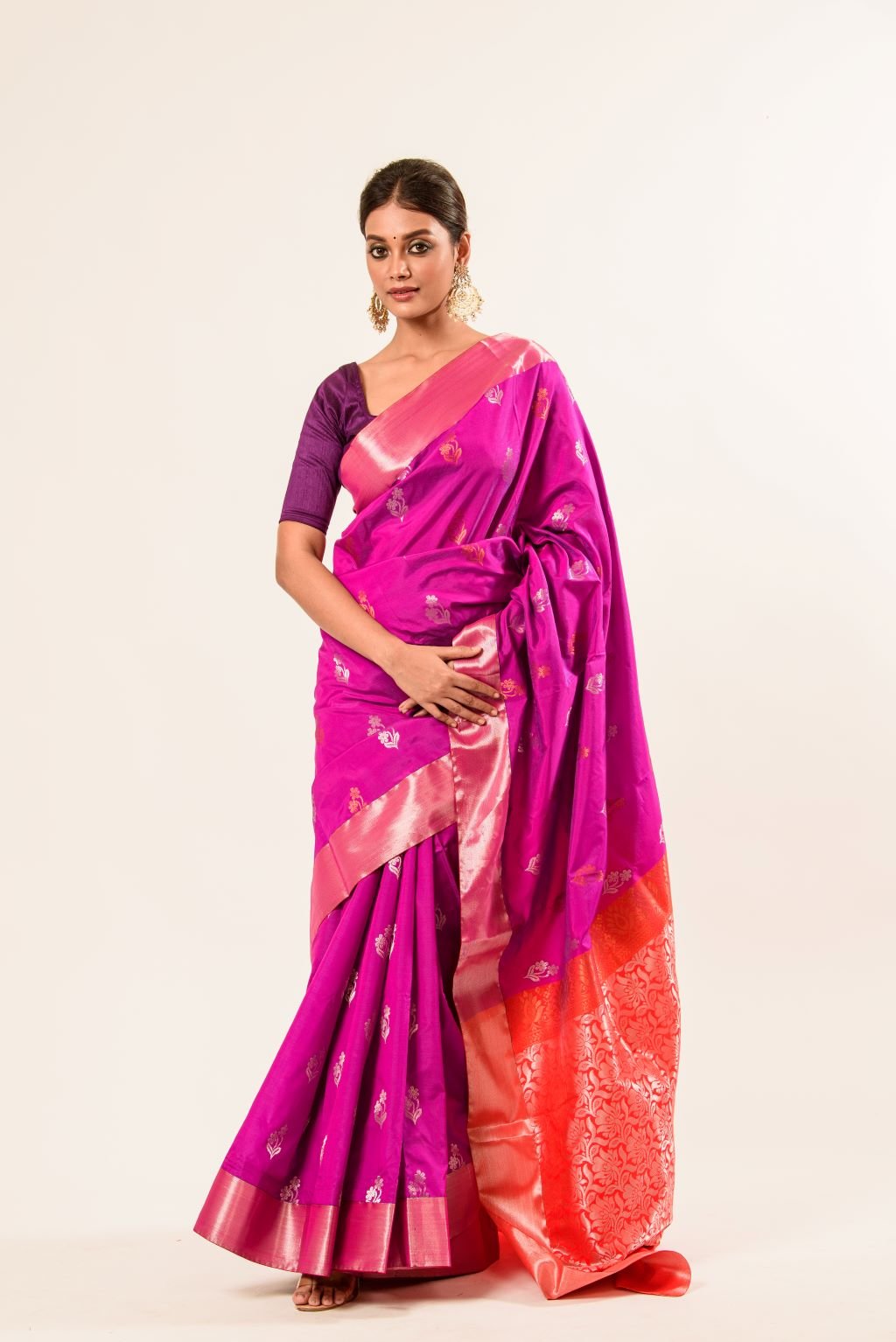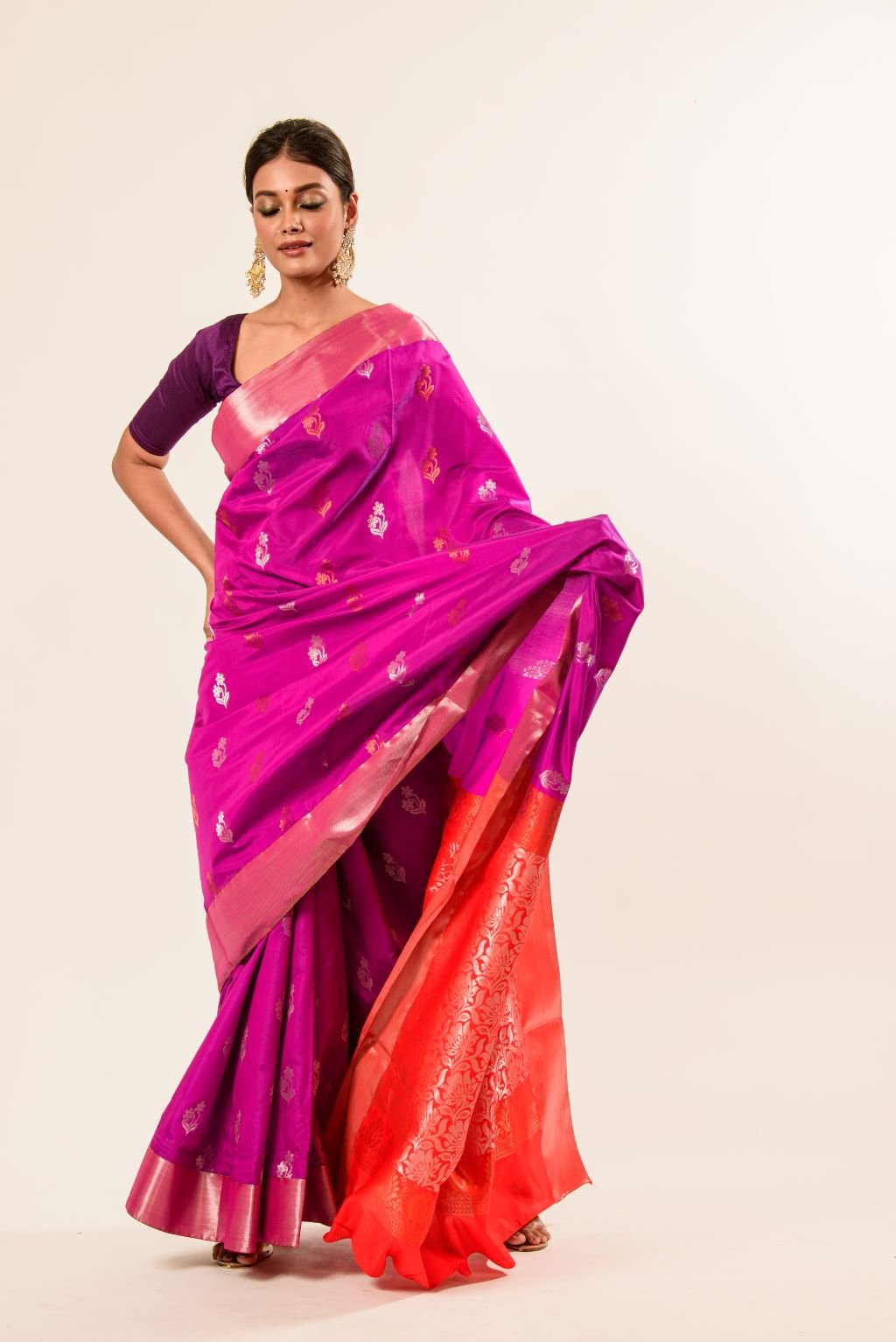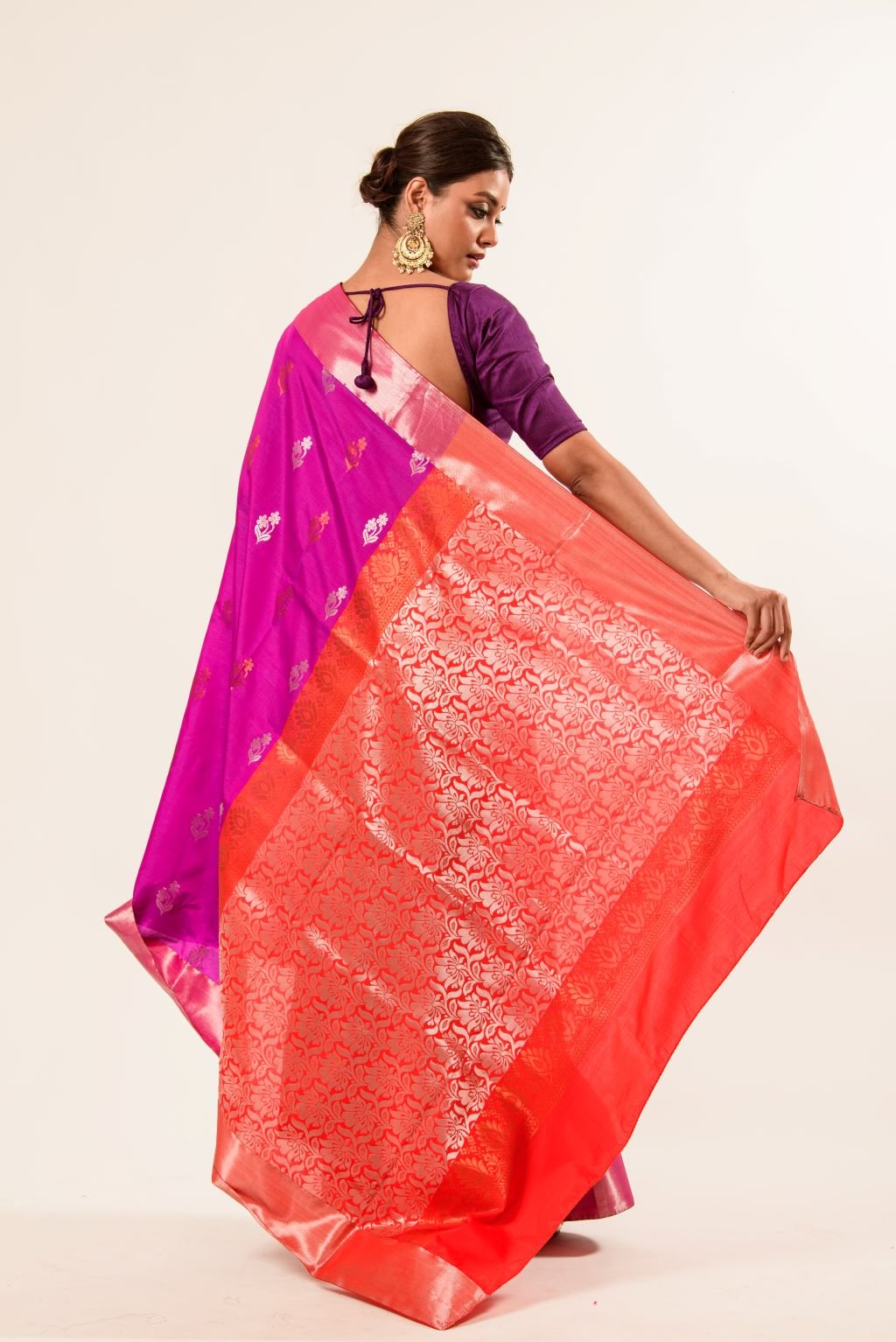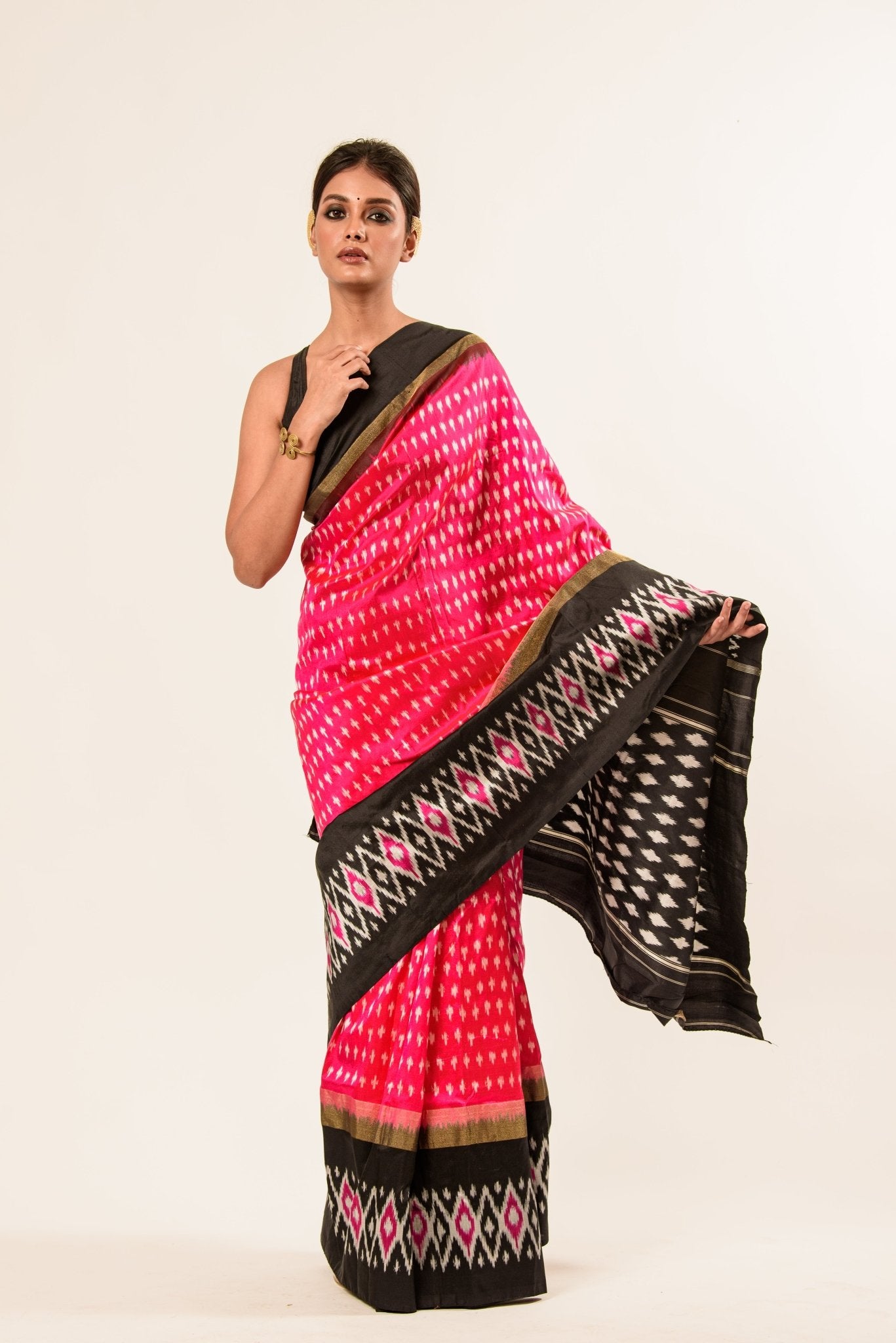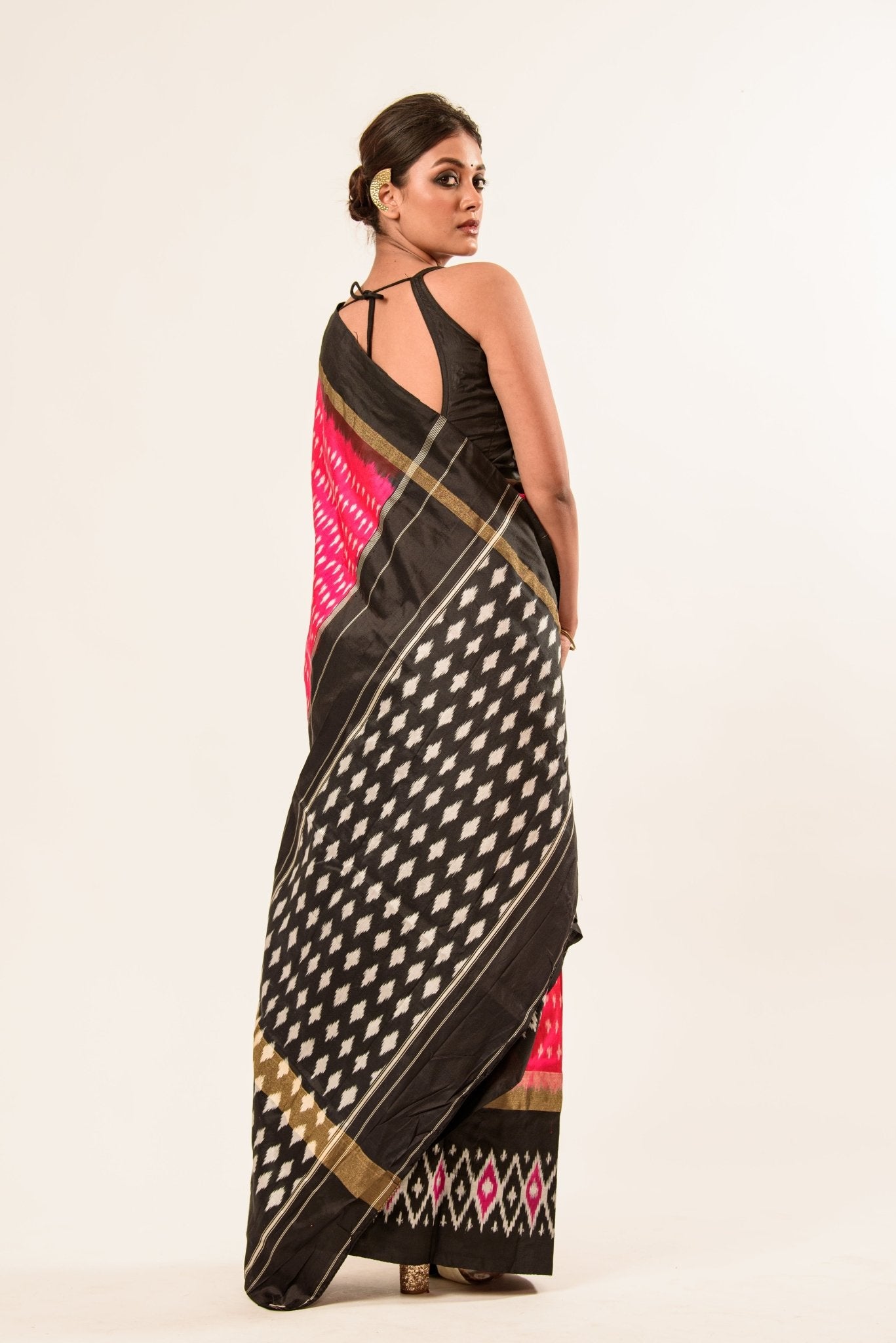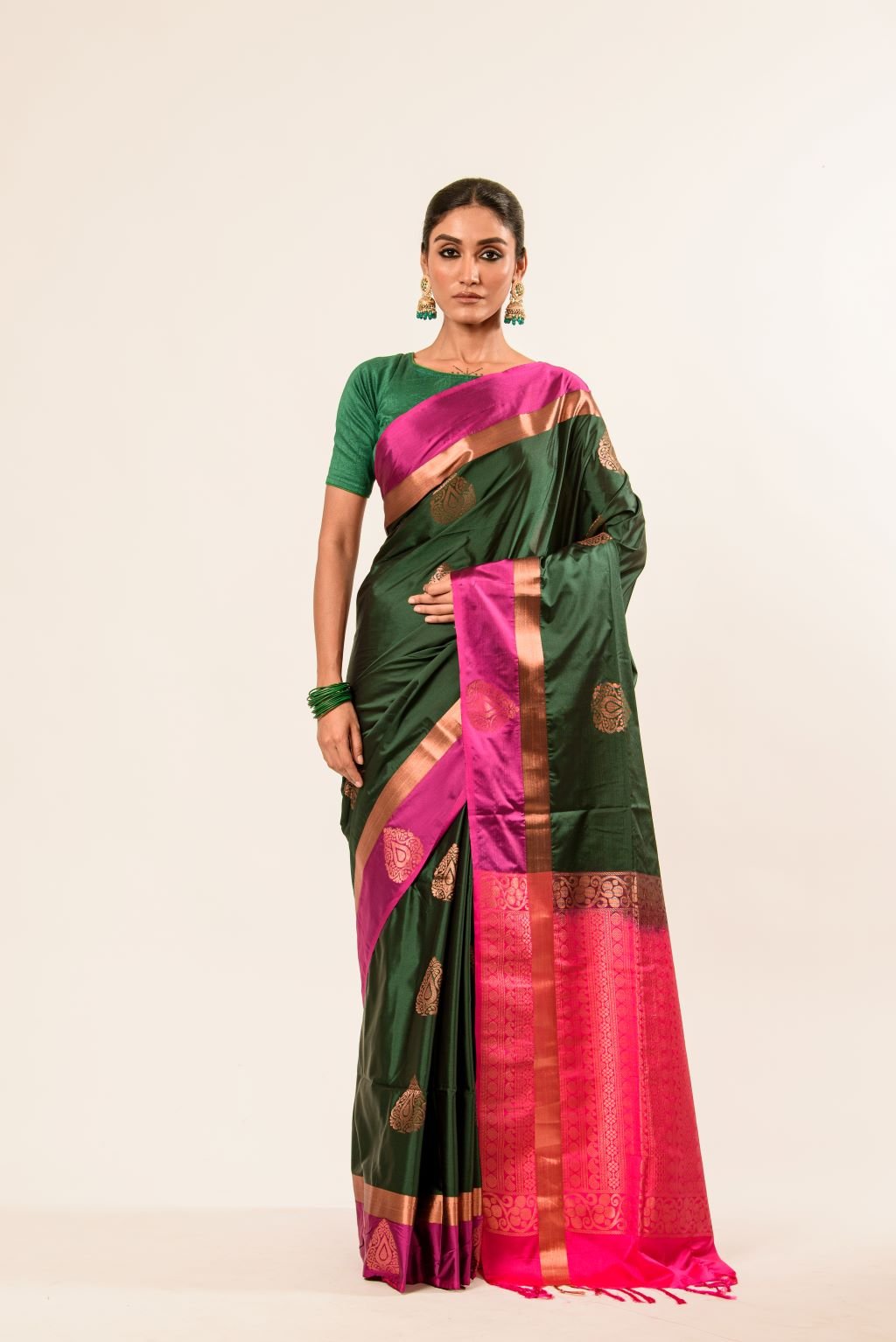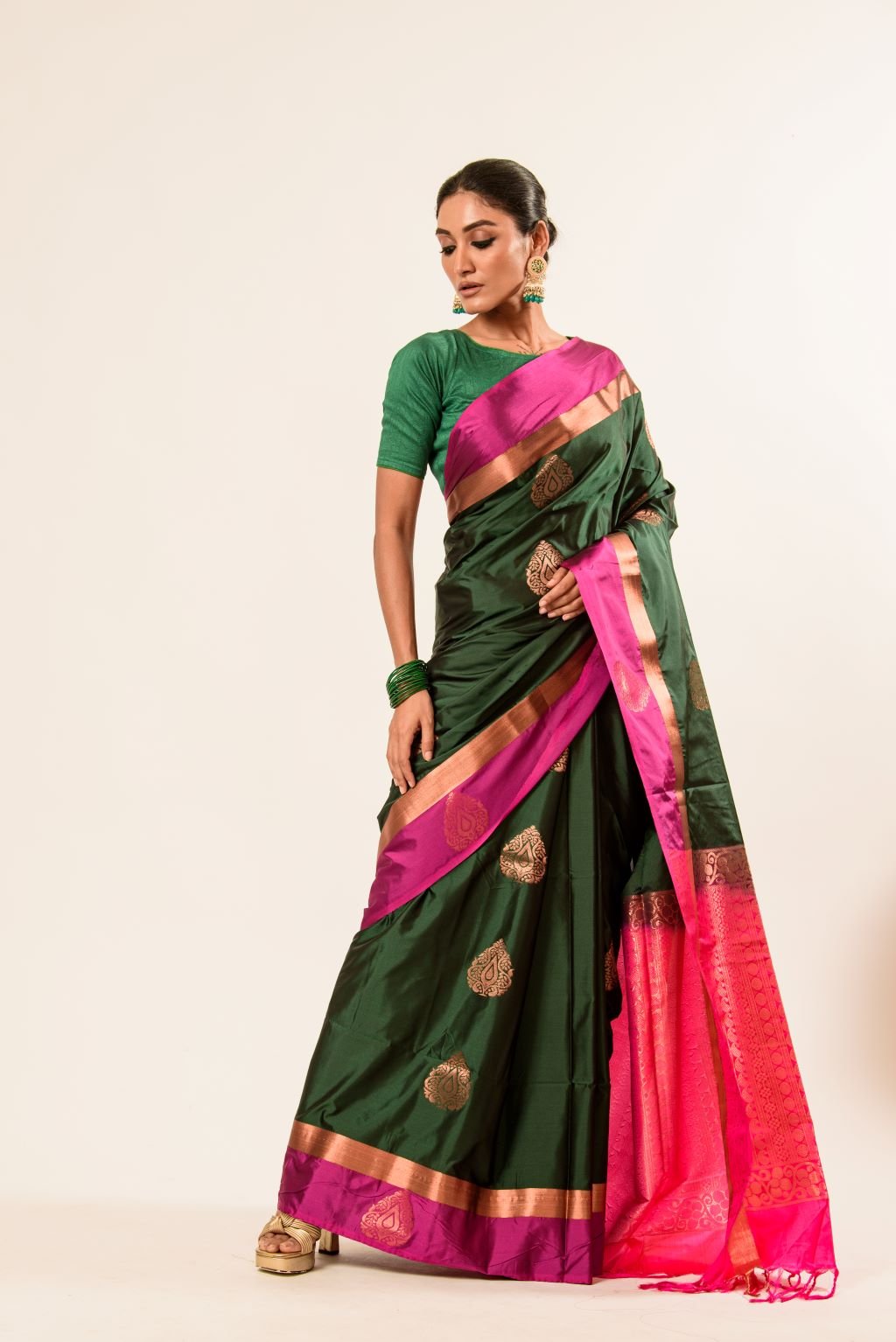While the monsoon season is a welcome relief from the sweltering summer heat, it does make things tricky for keeping your wardrobe in check, particularly dainty ethnic wear such as sarees. From daily commutes to office or a wedding during monsoon season, rain gets in the way somehow. But do not worry—your favorite sarees can brave a drizzle, and even a downpour, with a little added TLC.
1. Don't Leave It Wet for Long
The most important rule: never leave your wet saree bundled up. Whether it's a silk saree, cotton saree, georgette saree, or chiffon saree, keeping it wet for hours can cause permanent damage. The fabric can become discolored, develop water stains, or even start smelling musty. As soon as you’re indoors, gently unfold the saree and lay it out flat or hang it where it can air out and breathe.
 Image Source: Pinterest
Image Source: Pinterest
2. Rinse with Cold Water
If your saree has been sprayed with muddy water or contaminated rainwater, gently wash it off using cold clean water to get rid of any dirt or impurities. Do not use hot water since it might lead to color bleeding, particularly with densely colored clothing such as silk or printed cotton. An immediate rinse also prevents stains from setting.

Image Source: Pinterest
3. Dry in a Shaded Area
Direct sun may look like a time-saver, but is actually damaging to the vast majority of saree fabrics. Always dry your saree in a shaded, ventilated space. Sunlight bleaches the color and, in silks or chiffons, can actually weaken the threads. Hang the saree on a plastic hanger or lie it flat on a clean, flat surface to avoid stretching or loss of shape.
 Image Source: Pinterest
Image Source: Pinterest 4. Iron Only After It's Completely Dry
Ironing a wet saree is a complete no-no. It will lead to burns in the fabric or water marks. Once your saree dries completely, use a warm (not scorching) iron to iron out all the creases. For sensitive sarees such as silk or organza, always iron on the back side or put a thin cotton fabric in between.

Image Source: Pinterest
5. Use Mild Detergents for Cleaning
If your saree needs to be washed thoroughly after becoming wet, use a gentle detergent or a special fabric wash. Chemicals can remove the color and softness of the fabric. For high-end sarees, opt for professional dry cleaning, particularly if they contain embroidery, sequins, or zari work.
 Image Source: Pinterest
Image Source: Pinterest 6. Store Properly After Drying
Once your saree is dry and clean, fold it and keep it in an air-permeable cotton or muslin pouch. Avoid plastic wraps, as they may trap dampness and cause mildew. You can also place silica gel packets or neem leaves in the storage space to soak up any extra moisture and stop odors developing.
 Image Source: Pinterest
Image Source: Pinterest Final Thoughts
Monsoons are unpredictable, but with these easy care tips, your sarees can stay as lovely and elegant as before. Always carry an umbrella with you and attempt to use lighter, drying-out quickly fabrics when venturing out. But if the rain does surprise you, then you know exactly what to do to save your saree and ensure that it looks perfect.
Shop Sarees By Colour
|
Saree Color |
Ideal Occasion |
|
Weddings, Engagements, Karva Chauth, Festivals |
|
|
Mehndi Ceremonies, Traditional Puja, Eco-themed Events |
|
|
Contemporary Gatherings, Office Parties, Subtle Elegance for Day or Night |
|
|
Haldi Ceremonies, Daytime Functions, Spring Events |
|
|
Baby Showers, Birthday Parties, Romantic Dinners |
|
|
Evening Parties, Corporate Events, Receptions |
|
|
Temple Visits, Traditional Ceremonies, Peaceful Gatherings |
|
|
Cocktail Parties, Formal Events, New Year Celebrations |
|
|
Navratri, Religious Events, Cultural Gatherings |
|
|
Engagements, Festive Celebrations, Theme Parties |
|
|
Summer Weddings, Brunches, Casual Daytime Gatherings |

